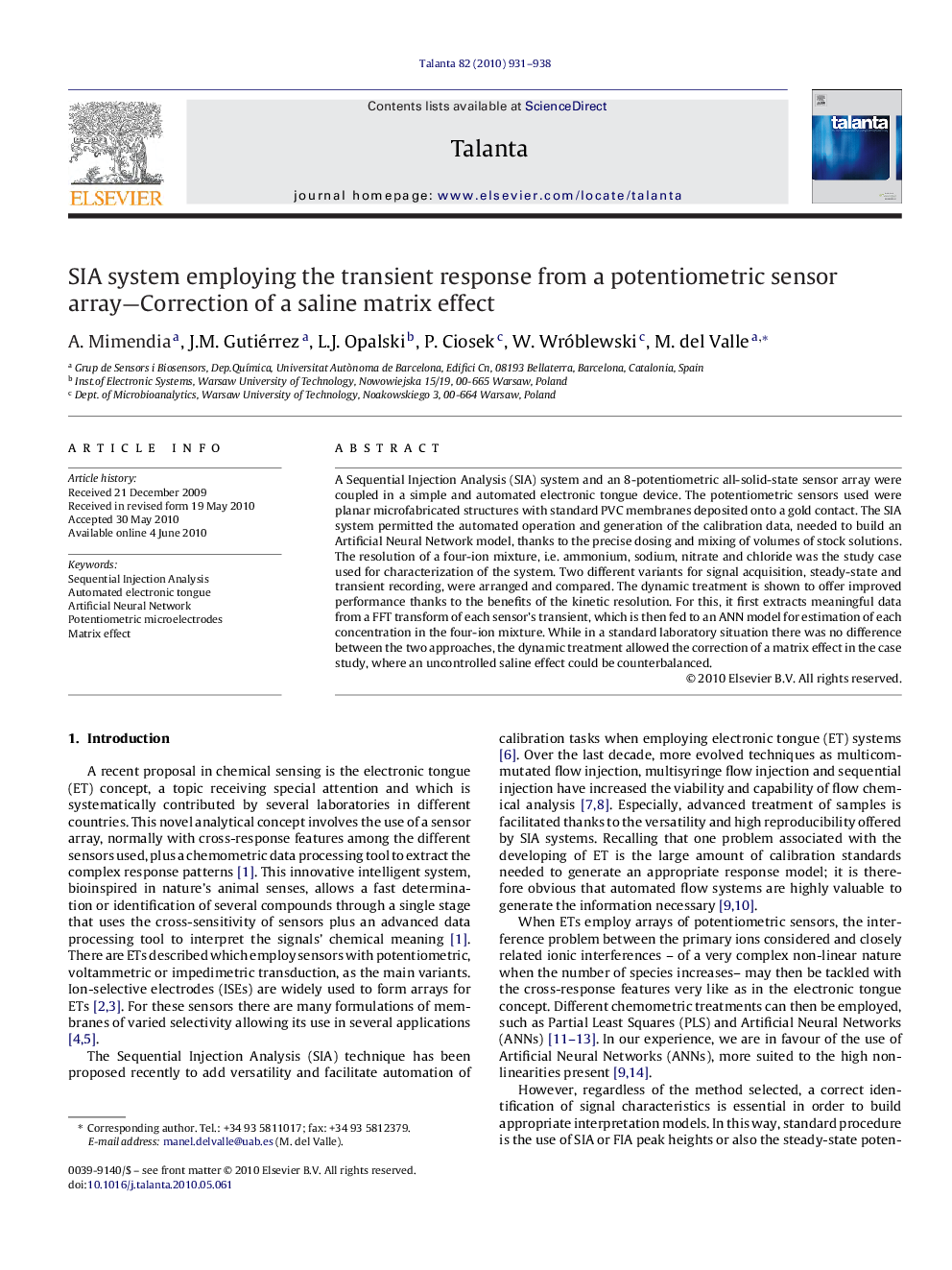| Article ID | Journal | Published Year | Pages | File Type |
|---|---|---|---|---|
| 1244591 | Talanta | 2010 | 8 Pages |
A Sequential Injection Analysis (SIA) system and an 8-potentiometric all-solid-state sensor array were coupled in a simple and automated electronic tongue device. The potentiometric sensors used were planar microfabricated structures with standard PVC membranes deposited onto a gold contact. The SIA system permitted the automated operation and generation of the calibration data, needed to build an Artificial Neural Network model, thanks to the precise dosing and mixing of volumes of stock solutions. The resolution of a four-ion mixture, i.e. ammonium, sodium, nitrate and chloride was the study case used for characterization of the system. Two different variants for signal acquisition, steady-state and transient recording, were arranged and compared. The dynamic treatment is shown to offer improved performance thanks to the benefits of the kinetic resolution. For this, it first extracts meaningful data from a FFT transform of each sensor's transient, which is then fed to an ANN model for estimation of each concentration in the four-ion mixture. While in a standard laboratory situation there was no difference between the two approaches, the dynamic treatment allowed the correction of a matrix effect in the case study, where an uncontrolled saline effect could be counterbalanced.
